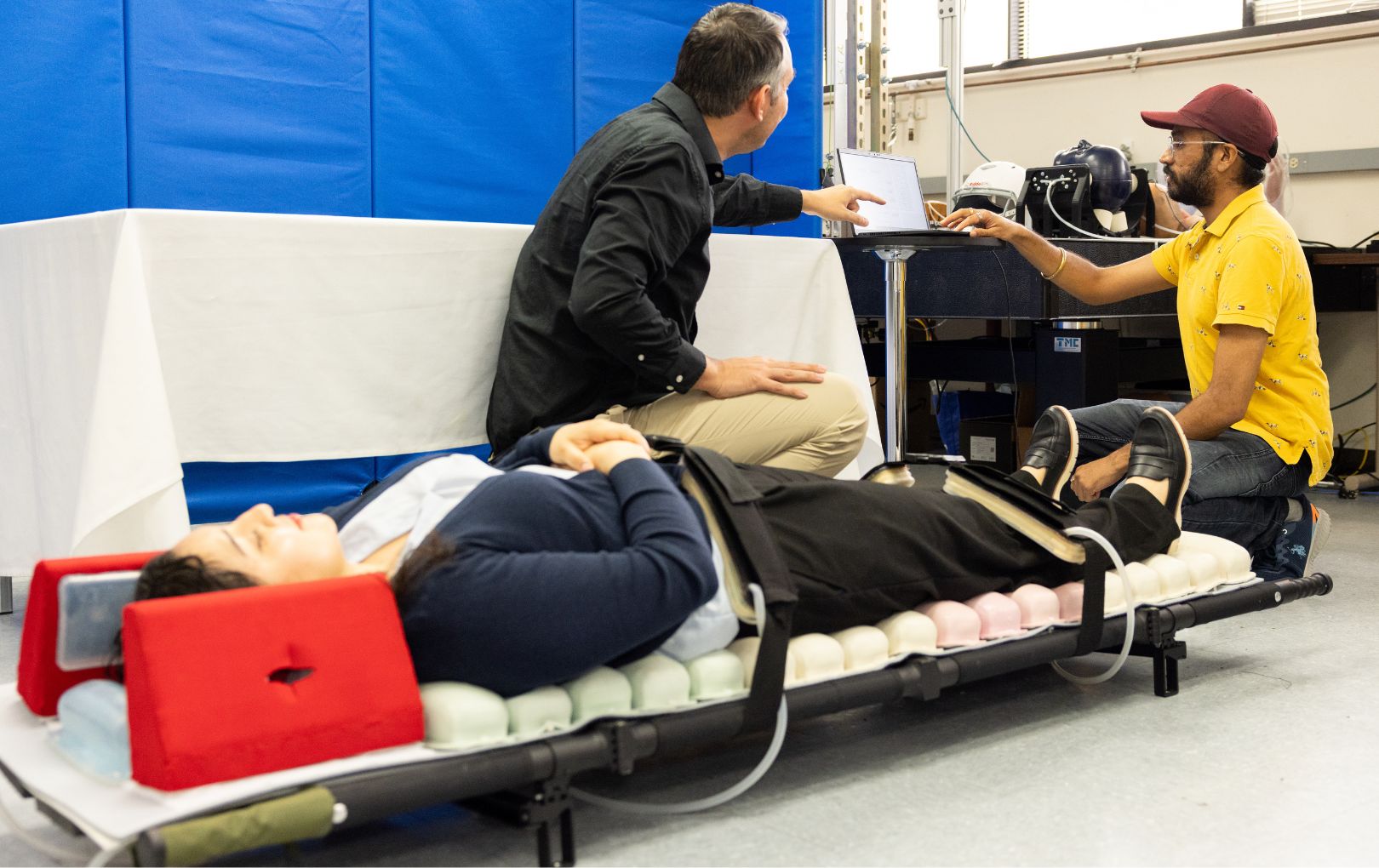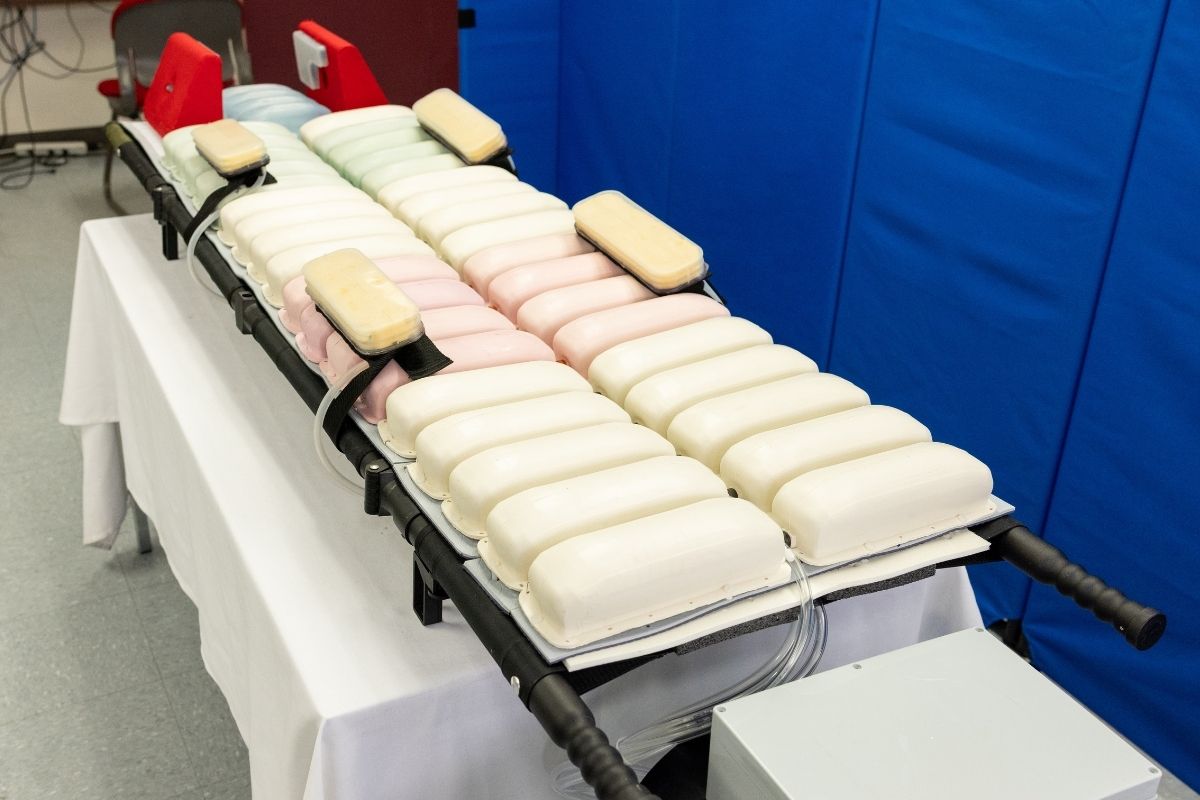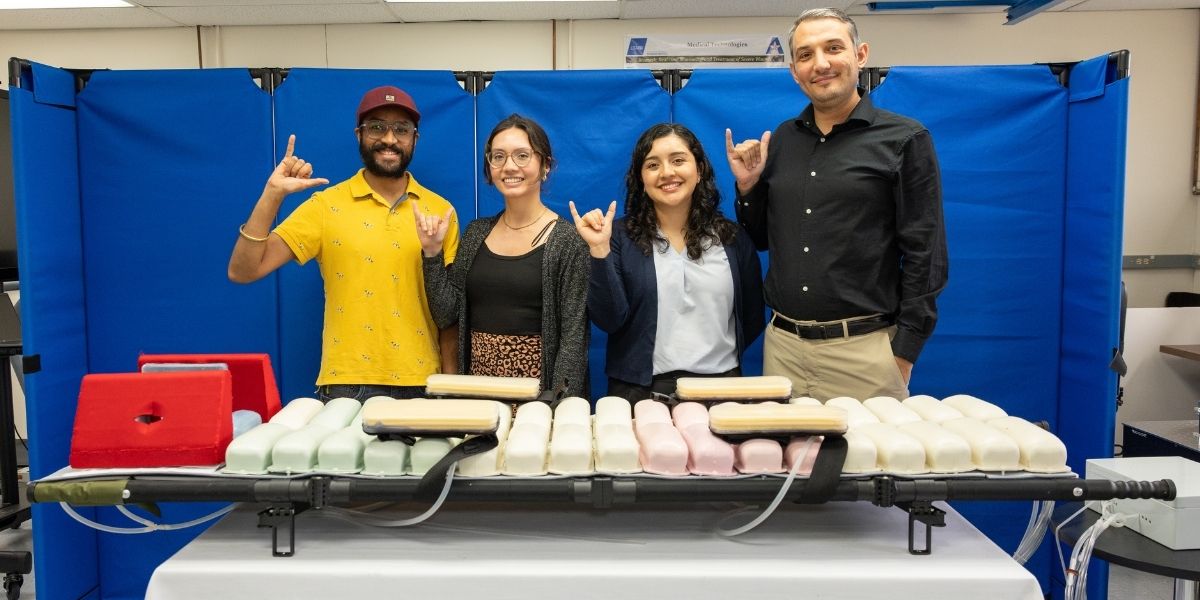
In combat zones and emergency rescues, rapid evacuation and treatment can mean the difference between life and death. But prolonged immobilization during transport poses another life-threatening risk: pressure injuries.
A newly developed adaptive spine board (ASB) overlay aims to change that, offering an innovative solution to prevent pressure injuries and dramatically improve patient outcomes. Developed by researchers at The University of Texas at Arlington and UT Southwestern Medical School, the adaptive spine board sits atop a standard stretcher or spine board, using air-cell technology to redistribute pressure more effectively than traditional evacuation surfaces. The team's newly published study shows the ASB outperforms other immobilization options.

"The ability to dynamically adjust pressure so that no vulnerable body regions experience excessive weight is a breakthrough for medical evacuation," said Muthu B.J. Wijesundara, principal research scientist at the University of Texas at Arlington Research Institute, the applied research unit of UTA that specializes in applying cutting-edge technologies to real-world engineering problems. "This innovation could set a new standard in casualty transport protocols."
Related: Shoe technology reduces risk of diabetic foot ulcers
Also called bedsores or ulcers, pressure injuries result from prolonged pressure on the skin and underlying soft tissue, leading to cell death, tissue breakdown and open wounds. They are a constant risk for trauma patients during long-range transport, which sometimes lasts more than 16 hours. Research shows that more than 50% of casualties transported during the Iraq War developed pressure injuries before reaching a hospital.

While some existing technologies, such as vacuum spine boards, can help redistribute pressure, their effectiveness is limited. Many conventional supports fail to keep pressure below the thresholds recommended to prevent injury. Military stretchers and pads have shown to create high-pressure points on vulnerable areas of the body, including the back of the head, base of the spine, buttocks and heels.
"Beyond military use, the ASB overlay could prove valuable in civilian medical transport, particularly for spinal injury patients who are at high risk for pressure ulcers," Dr. Wijesundara said. "The research also highlights potential applications in other environments where prolonged immobilization is necessary, such as disaster relief and space exploration."
The ASB overlay features a multi-segmented air-cell design that target pressure-prone areas more effectively than previous solutions. It is divided into five distinct sections—head and neck, upper trunk, buttocks and pelvis, thighs, and feet and heels—each equipped with sensor-driven pressure modulation for responsive, localized support.
Related: UTARI scientist earns top award for wheelchair technology
"One key innovation is the system's ability to autonomously adjust the air-cell pressure to maintain optimal distribution for each patient," Wijesundara said. "We developed an algorithm that compensates for environmental variables, such as temperature and barometric pressure changes, ensuring consistent performance across varying conditions. Testing showed that the ASB overlay outperformed typical equipment used in casualty transport."
.ashx?revision=4267e41f-0ddf-4855-be50-67fac47a05d0)
For critically injured patients, pressure injuries can significantly complicate treatment and recovery, leading to longer hospital stays, higher infection risks and additional surgeries. They're also costly. The Agency for Healthcare Research and Quality (AHRQ) estimates that pressure injuries in the U.S. can cost up to $151,700 per case, adding $11.6 billion in additional health care expenses annually. Alarmingly, the AHRQ also reports that approximately 60,000 patients die each year because of pressure injuries. The ASB overlay's advanced pressure modulation could help mitigate these risks—especially for patients who cannot be repositioned during extended transport.
The research team—including Veysel Erel, Allison Palomino, Alexandra Jamieson, Inderjeet Singh and Saurav Kumar at UTA, along with Yi-Ting Tzen at UT Southwestern—is now planning additional studies to improve the device's usability in real-world conditions. As the military increasingly relies on prolonged aeromedical evacuation, such advancements are critical for enhancing patient care in conflict zones.
Funding for this research came from the Trauma Research and Combat Casualty Care Collaborative from the University of Texas System.
About The University of Texas at Arlington (UTA)
Celebrating its 130th anniversary in 2025, The University of Texas at Arlington is a growing public research university in the heart of the thriving Dallas-Fort Worth metroplex. With a student body of over 41,000, UTA is the second-largest institution in the University of Texas System, offering more than 180 undergraduate and graduate degree programs. Recognized as a Carnegie R-1 university, UTA stands among the nation's top 5% of institutions for research activity. UTA and its 280,000 alumni generate an annual economic impact of $28.8 billion for the state. The University has received the Innovation and Economic Prosperity designation from the Association of Public and Land Grant Universities and has earned recognition for its focus on student access and success, considered key drivers to economic growth and social progress for North Texas and beyond.






